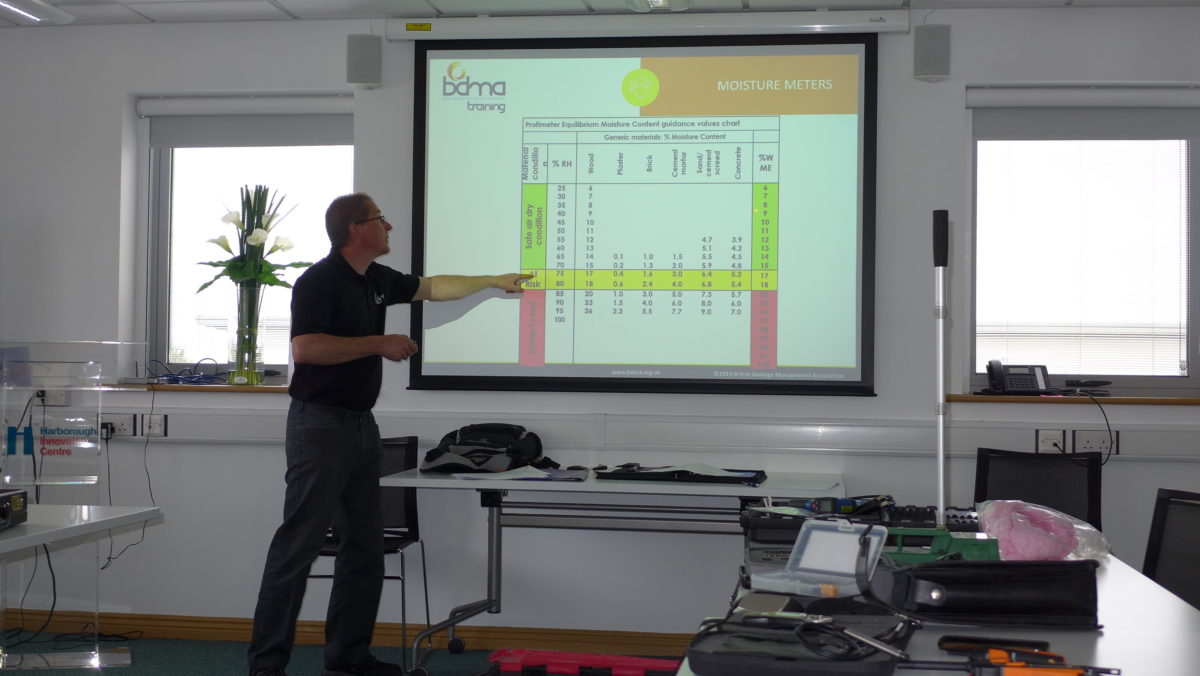Training Insight: The Correct Use & Interpretation of Moisture Meters

Here at the BDMA, we’ve recently introduced a new training course to our training catalogue – ‘The Correct Use & Interpretation of Moisture Meters’. The new course is open to individuals (BDMA members and non-members) working in the damage management industry, who are looking to improve their knowledge of moisture meters and readings.
The instructor-led training course gives attendees better insight into the operations and functions of different types of moisture meters as well as further understanding into the correlation between the meter readings on different materials. The 1-day training course helps to improve consistency and standards across the restoration industry supply chain and awards 5 CPD points.
Below are some key questions and focus points that are explained during the course:
- What does a moisture meter actually do and why do we need them?
- How does a moisture meter actually work? (what does it read)
- Capacitance
- Resistivity
- Thermohygrometer (Temp, RH, Psychrometrics)
- Hygrohood & RH sleeves
- Carbide and Moisture balance (gravimetric)
- Types of moisture meter
- Tramex
- Testo
- Protimeter
- Other
- Interpretation and correlating of moisture meter readings
- Equilibrium Relative Humidity (ERH)
The first training course took place at the end of May and was thoroughly enjoyed by all attendees. Below is a testimonial from one of the participants.
“This was a superb course that genuinely exceeded my learning expectations, it covered a range of topics from drying logs, verification data, brands of moisture meter, how moisture meters work, permeance of materials, pore structure, porosity of materials, salt testing, remote monitoring, ERH testing, gravimetric testing, thermography and many more fascinating insights into drying technology.
I’d thoroughly recommend the course to all BDMA members and anyone interesting in learning more about how we better understand the equipment used when verifying drying data. Jerry Gibbs ran the day in a really relaxed way that enhanced my own learning and allowed questions to be raised through out. The day after I attended I had a claim involving dry readings on a concrete floor which we knew was very likely still wet. The course has enabled me to suggest appropriate testing kit and have a good idea on why the false positive reading was obtained.”
The Correct Use & Interpretation of Moisture Meters training course is open to both individuals and company teams; companies can request an exclusive training course delivered just for them if preferred. If you have an interest in attending the next training session, please contact info@bdma.org.uk.
Keep an eye on all of our upcoming training courses here: http://www.bdma.org.uk/training-and-education/#training-calendar.
